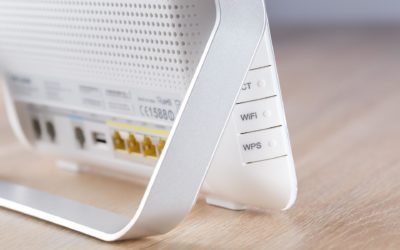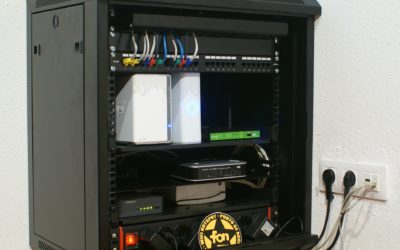NBN Cable To Granny Flat? Here are alternatives
We often get asked ‘How do I get an NBN cable to the granny flat?’
Well, you could organize an additional service from your service provider. But why go through those hassles if there are easier alternatives.
Here are some alternatives we recommend:
1. Use a range extender
What is a WiFi Range Extender?
In a nutshell, a range extender is a wireless signal booster that plugs into an AC outlet. The device takes the existing WiFi from your router and rebroadcasts it at increased power, extending its coverage area throughout your home or business.
Range extenders are useful for any application that requires maximum bandwidth (e.g., gaming, streaming 4K video) and especially in large homes with many people online at once. The simple plug-and-play nature of range extenders makes them easy to install and set up—even take along on travel! And since they broadcast wirelessly there’s no need to run long Ethernet cords throughout your home.
2. Make use of mesh networks to extend coverage to the granny flat
What is a WiFi Mesh Network?
Mesh networking is a specialized type of wireless network that can efficiently handle streaming data. A mesh network enables users to connect devices to the internet without using traditional WiFi access points or antennas. Instead, each device acts as an access point and is able to pass along data packets for other devices, creating a chain of connectivity between them all. Mesh networks create their own pathways dynamically, meaning they are less vulnerable to failure if one device goes offline.
First designed by MIT grad student David Burgess in 1997, mesh networking technology has only recently graduated from its academic roots into commercial products. There are now several hardware makers offering their own take on this clever system, including the popular Plume network extender.
How does it work?
A typical home WiFi network is based on a just few central access points. These are usually placed in the most convenient location, either close to your existing router or somewhere in between where you want it to provide connectivity. Unfortunately, this does not always result in perfect signal strength throughout your home; if one room ends up with an especially poor connection it can be difficult to find a solution without wandering around with an extension lead and plugging things together like some sort of DIY Dr. Frankenstein (not recommended).
Enter mesh networking, which instead creates multiple radio connections that act as alternative paths for transmitting data through your home. If one node fails then the others will pick up the slack, creating multiple routes around any obstacles they encounter along their way.’s like having several routers all invisibly linked together so if one fails, the others pick up on its signal and keep going.
It sounds like an ideal solution but despite several years of research into mesh networking (and some early trials that saw it first used in battlefields), there’s still no consumer product available on the market.
That’s probably because creating a router that can communicate with other routers to create multiple paths for data is more complicated than it sounds, which has led to delays as different companies figure out exactly how they will make this work. One concern is security; if you have more than one way of communicating between nodes then it also means you potentially have more than one way for people to try and break in – so proper is going to be essential. There is a solution, though.

Enter WiFi Mesh System
Wi-Fi Mesh Networking is the answer. Originally conceived by a group of early adopters called the Wireless Battle Mesh Alliance in 2006, there’s now a consortium dedicated to it that has recently received backing from major industry players such as Google and Qualcomm. At its most basic level, mesh networking means you can add nodes to your network by adding additional Wi-Fi devices rather than needing to add more cables or routers/hubs. This creates a self-organizing system where each device automatically finds the best way for data to flow between all points without interruption – creating an incredibly efficient system with a lot less cabling needed.
The type of technology currently being developed will work on any open Wi-Fi standard, but the most developed workaround is based on the 802.11 standards, which will be implemented into next-generation consumer devices.
The technology has been created as a direct response to the rise of streaming media and demands from consumers who wanted more control over their wireless networks. In many cases, users were struggling with messy cabling systems that needed constant reconfiguration as more devices entered the home or office. This resulted in a poor user experience where the signal loss was frequent and slow speeds difficult to maintain across large spaces – not ideal for high definition Netflix viewing or online gaming! Fitted with mesh networking technology, these issues can effectively be eradicated by creating an efficient network configuration without the need for so much cable coverage. In fact, tests have shown that reliable signals can be achieved across up to 1.5 acres or roughly 20 football pitches!
Limitless possibilities
Another great possibility that mesh networking technology provides is the ability for entire communities to have internet access in certain areas of the world where it may otherwise be too expensive or difficult to install cables and servers. The kit provided by companies that utilize this network type virtually eliminates any kind of signal loss between each device and allows for very quick and easy configuration – one user even went as far as saying he had successfully installed his kit within 10 minutes! These devices are also ideal if you want faster speeds via multiple different wireless routers instead of just one – users typically achieve speeds around 2x faster than traditional routers per node (that’s usually one, but can be 2-4). These kits are perfect for any business making use of a large number of devices at one site, such as warehouses and office buildings.
3. Powerline
What is a powerline adapter?
Powerline adapters (or powerline networking) are a way of networking devices together that uses your existing home electrical wiring as the network cable! These adapters connect to each other over your home’s powerlines and then all of the connected devices can communicate with each other on this shared ‘network’.
One minor downside is that they do not work well through appliances or circuits with high amounts of power consumption. As a result, it may be helpful to install these types of networks in rooms where you don’t have appliances such as televisions, microwaves, computers, and so forth.
4. Run an ethernet cable all the way from your home to the granny flat.
If the above is all too daunting, why not simply run an ethernet cable all the way to the granny flat. This saves you time fiddling with technology.
So if you are in Melbourne and dont wish to get another NBN cable to the granny flat, get in touch with one of our internet technicians.








